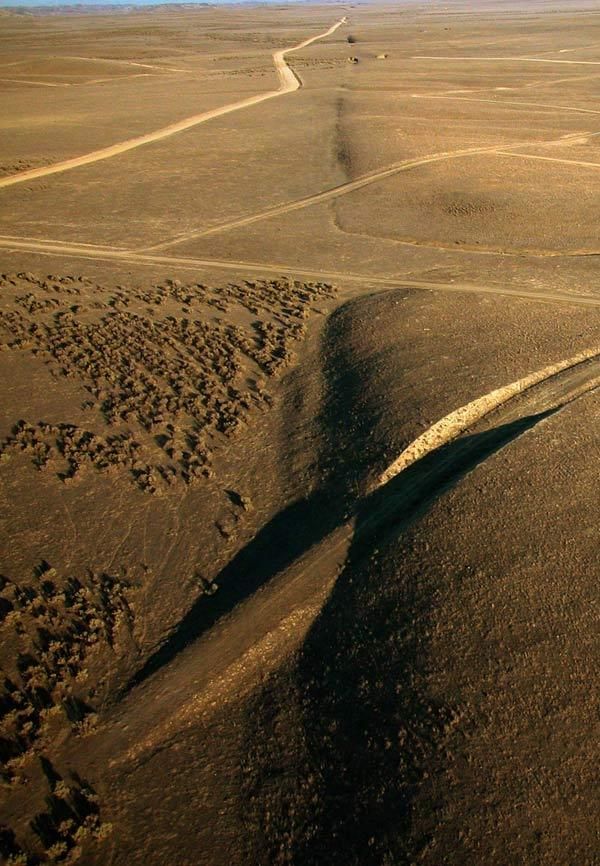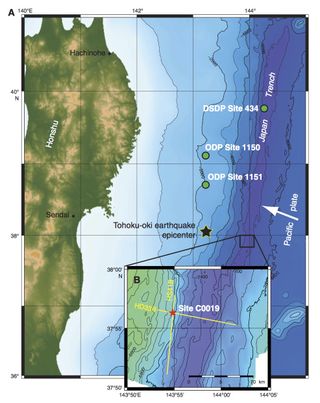
Dead Plants Hold Earthquake Secrets

With a few tricks borrowed from the oil industry, scientists are hoping to one day better understand why earthquakes start and stop.
Geologists would love to know what controls earthquakes. But one of the best ways to answer that question — drilling into faults — is expensive and difficult. An easier alternative is to study faults exposed on Earth's surface, and look at "fossilized" earthquakes preserved along the faults.
But faults can be several feet wide and filled with crushed-up rock, or they can be inch-thick cracks. How does someone walk up to a crack, point a finger at it and determine an earthquake occurred there?
Sometimes, the tremendous heat created during an earthquake melts rock inside a fault. "That was the gold standard," said Heather Savage, a geophysicist at Lamont-Doherty Earth Observatory in New York. "When you get the melt, it means the fault slipped fast."
(Faults get hot because of friction. Just as rubbing your hands warms them on a winter's day, earthquakes heat the Earth when two sides of a fault slide past each other during a quake.)
But there are plenty of old faults exposed on Earth's surface and very little of this melted rock, called pseudotachylyte, Savage said.
So, over the past few years, Savage and her colleagues have devised a new way to find old earthquakes. It turns out that earthquakes can "cook" dead plants and algae trapped in a fault, similar to how organic material transforms over eons into oil.
Sign up for the Live Science daily newsletter now
Get the world’s most fascinating discoveries delivered straight to your inbox.
And because heat from an earthquake is linked to fault strength, Savage is also testing whether this cooked organic matter reveals clues about fault strength during past earthquakes. [Image Gallery: This Millennium's Destructive Earthquakes]
"Temperature rise during an earthquake says something about the strength of the fault when it was slipping, and that is a big unknown in earthquake science," Savage told LiveScience's OurAmazingPlanet. "These kinds of questions are really fundamental if we're ever going to get better at making accurate earthquake predictions."
Earthquake thermometers
The technique could prove especially handy at subduction zones — the source of the world's biggest earthquakes — which are often rich in organic material scraped off the ocean floor.
In Alaska, a 60-million-year old subduction zone between the Pacific and North American plates now sits exposed above shoreline at Pasagshak Point on Kodiak Island. This is one of the only places in the world where pseudotachylyte is found on a subduction zone. Savage and her colleagues tested their earthquake "biomarker" method here, comparing the temperature recorded by organic matter to that from the pseudotachylyte at one section of the fault.
The organic chemistry was borrowed from the oil industry, which has invested millions in measuring how rocks are heated based simply on the properties of organic matter in those rocks — though the cooking usually takes millions of years, not seconds and minutes, like earthquakes.
In Alaska, the biomarkers were diamondoids, carbon and hydrogen heated until they take on the same basic structure as diamonds. By modeling the heat needed to create diamondoids, Savage and her colleagues estimate the earthquake they found was about a magnitude 7 or magnitude 8, with a temperature rise of between 1,540 and 2,140 degrees Fahrenheit (840 to 1,170 degrees Celsius) and between 3 to 30 feet (1 to 9 meters) of movement. The findings were published Jan. 6 in the journal Geology. [Shine On: Photos of Dazzling Mineral Specimens]

"We're very excited; it's one of the first times we've been able to do this with a new method," Savage said.
Savage noted that this earthquake thermometer only works on faults in sedimentary rocks that carry organic material, and that not all earthquakes will generate a lot of heat. In California, along an ancient strand of the San Andreas Fault called the Punchbowl Fault, the team found a temperature rise of only 1,150 F (625 C), despite geologic evidence of past earthquakes.
The group has several new projects in the works. They're investigating rocks from Japan's JFAST drilling site, at the source of the 2011 Tohoku earthquake, and working on the San Andreas Fault deep drilling project, to see if the slow-moving part of the San Andreas Fault ever had large earthquakes. They are also running laboratory tests to customize those petroleum-industry chemical equations and to better understand the link between temperature on faults and organic matter. And someday, Savage would like to create a "heat map" of a fault.
"We're hoping that being able to walk up to an outcrop and fingerprint this kind of slip, which may help tell us how earthquakes get started, and maybe how they stop," Savage said.
"A fault plane is hundreds of kilometers long and tens of kilometers wide, and maybe the strength of that fault is determined by very small patches holding most of the resistance to sliding," Savage said. "Understanding how stress is distributed on faults is a very important question toward understanding when a fault is getting close to actually having an earthquake."
Editor's note: This story was updated Jan. 24 to reflect updated fault temperature data.
Email Becky Oskin or follow her @beckyoskin. Follow OurAmazingPlanet @OAPlanet, Facebook and Google+. Original article at LiveScience's OurAmazingPlanet.











